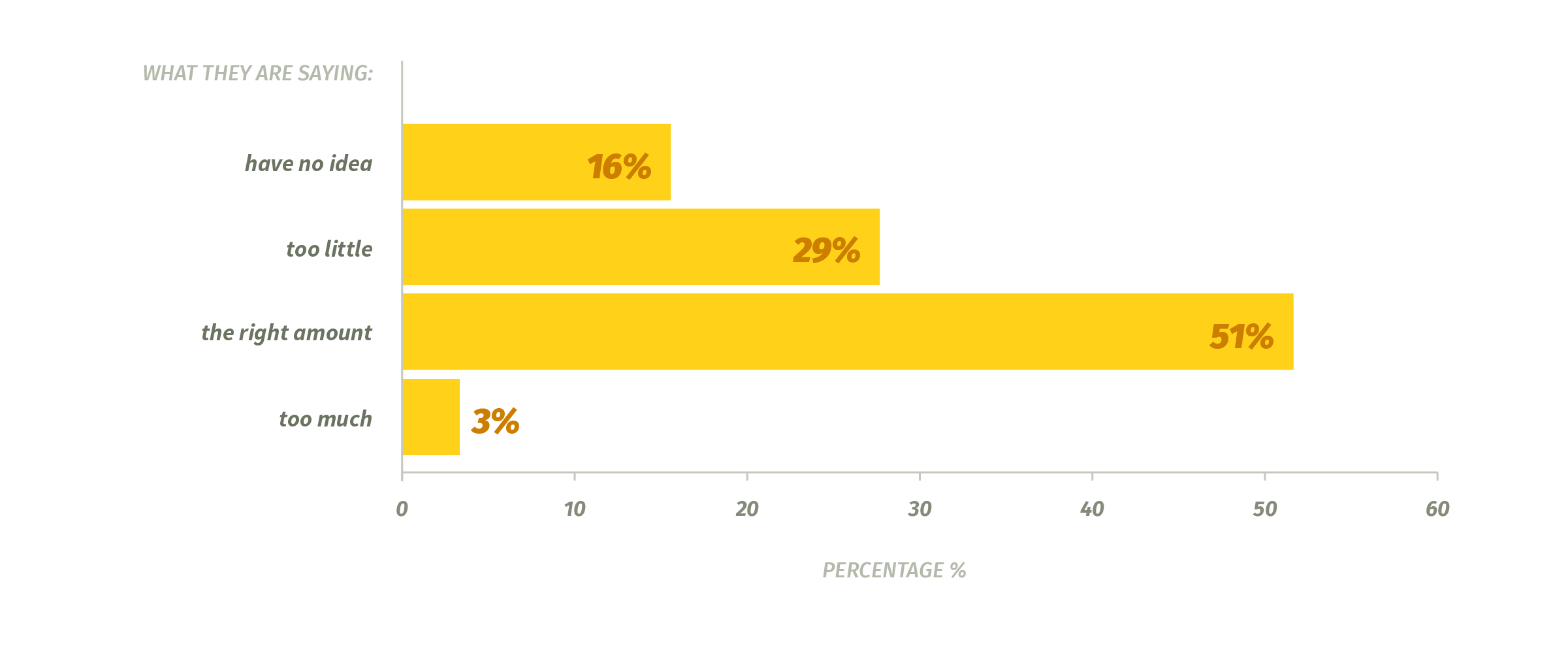The Key HR Metrics You Should Be Measuring
Perhaps the most visible evidence that strategic HR is taking hold in business is that many organizations are starting to use HR metrics as a key part of their overall business strategy. In fact, one of our recent surveys shows that almost one-third of executives want to see reports from their HR teams more often. What’s more, a whopping 82 percent say that such HR metrics are somewhat useful, useful, or extremely useful for their organization.
If this is the case—if executives value HR metrics and want to see more of them—then HR teams need to step up their data analysis game. Don’t know where to start? We’ve created this guide to help you understand the basics of HR metrics and which ones you should be measuring to make a real impact on your organization.
What Are HR Metrics?
HR metrics, or human resources metrics, are key figures that help organizations track their human capital and measure how effective their human resources initiatives are. Examples of such data include turnover, cost-per-hire, benefits participation rate, and others (we’ll get into more of them later). Measuring this kind of information—what’s working well, what needs improvement, and what trends to expect in the future—helps organizations figure out their people strategy.
Why HR Metrics Matter
In a recent study, we found that both executives and HR professionals agree that measuring HR and its impact on an organization is critical. In fact, many executives want to hear from their HR teams more frequently and with more detailed HR reports.
What this means is that HR metrics are no longer nice-to-haves—they are a must for any HR team that wants to help build a solid, data-driven management strategy for their organization.
HR Metrics Impact Your Strategy
In our survey, over two-thirds of respondents said that it is very important or extremely important to measure the impact that HR initiatives have on their organization. This is a good sign for HR professionals because, in Peter Drucker’s words, “What gets measured gets improved.”
And to take that quote a bit further, what gets measured matters: a full 87 percent of respondents said that HR reports influence their organization’s strategy to varying degrees. If your organization hopes to make informed, strategic choices for the future, it’s clear that HR metrics need to be a piece of that puzzle.
Executives Want More HR Reports
As important as HR reporting is, it seems that some HR teams aren’t delivering as much information as their executive teams would like. Among the non-HR executives we surveyed, nearly one-third said their HR team doesn’t report often enough, and 16 percent said they have no idea how often their HR team reports.
While 51 percent of the respondents did agree that their HR teams report frequently enough, the numbers suggest that many organizations still have room for improvement. Therein lies a great opportunity for HR. Understanding the reporting needs of your executive team, and then meeting those needs, can open the way for you to become a more strategic force in your organization.

Measuring Employee Experience Needs to Be a Priority
It isn’t frequency alone that matters when it comes to HR metrics—it’s also about what you measure. We asked respondents for the types of HR reports they currently use to measure the impact of HR, as well as the types of HR reports they wish they had. From a list of various options, almost a quarter of respondents selected employee satisfaction as a report they would like to have, and 20 percent selected employee engagement.
Since HR is meant to serve the people of an organization, the employee experience should be an important part of the HR measuring process. Are HR initiatives helping to boost employee satisfaction and engagement? Or are they hindering these things? HR metrics can help answer these questions.
What Are the Most Important HR Metrics?
There is no shortage of things to measure in HR, from headcount to benefits participation. But what data will give your organization the insights it needs to grow and succeed? We’ve compiled a list of some of the most important HR metrics and formulas to monitor in your company.
Please note, your specific reporting strategy will largely depend on your organization’s size, priorities, HR team, and more. It’s important to collaborate with your executive team to understand what HR metrics are most important for your company to measure right now, as well as what will be important in the future.
Recruitment
- Headcount: The total number of employees in your organization or within a specific department you may be tracking.
- Demographics: The characteristics of your workforce such as age, gender, education level, and length of service.
- Time to Hire: The average number of days between when a job is posted and when a candidate accepts your offer.
- Acceptance Rate: The number of offer letters your organization extends divided by the number of candidates who accept an offer.
- Cost per Hire: The average cost of hiring a new employee. You can generate this number by adding up both internal and external hiring costs then dividing that total by the number of employees you hired in a given period.
- Time to Productivity: The time it takes for new hires to become acclimated at your organization and start working at full productivity.
- New-Hire Turnover: The number of new hires who leave within a set period of time, such as within their first year of employment.
Engagement & Retention
- Employee Satisfaction: The number of employees who would recommend your company as a good place to work versus the number of employees who wouldn’t, indicating overall employees satisfaction (an employee Net Promoter System℠* like ours can help you measure this).
- Total Turnover Rate: The number of employees who leave your organization within a given period of time divided by the average number of total employees (then multiplied by 100 to come up with a percentage).
- Voluntary Turnover Rate: The turnover rate including only those employees who leave your organization voluntarily.
- Talent Turnover Rate: The rate of turnover among your organization’s high-performing and high-potential employees.
- Retention Rate: The opposite of your turnover rate in that you divide the number of employees who remained in your organization over a given period by the number of total employees.
- Retention Rate per Manager: The retention rate broken down by individual teams and managers.
*Net Promoter, NPS, and the NPS-related emoticons are registered trademarks, and Net Promoter Score and Net Promoter System are service marks, of Bain & Company, Inc., Satmetrix Systems, Inc. and Fred Reichheld.
Time Tracking
- Absence Rate: The average number of days employees are absent in a given time period, not including approved PTO (also called absenteeism).
- Absence Rate per Manager: The absence rate broken down by individual teams and managers.
- Overtime Hours: The number of overtime hours worked by employees in a given time period. You can calculate an average number or break it down by individual employees.
Employee Value & Performance
- Revenue per Employee: The total amount of revenue divided by the total number of employees.
- Performance & Potential: A nine-box matrix that allows you to categorize employees according to their performance and potential levels for better succession and leadership planning.
- Employee Performance: You can track employee performance through self-assessments, peer reviews, manager assessments, or a combination of all three.
- Goal Tracking: If your performance management software includes goal tracking, you can see the goals employees have set, how these goals connect to larger company goals, and the progress employees have made.
- Company Performance: A high-level comparison of how well employees are performing versus how engaged and valued they feel. (This is one of the snazzy reports you’ll find in BambooHR!)
Training & Development
- Training Expenses per Employee: The total cost of your organization’s training courses and programs divided by the total number of employees.
- Training Completion Rate: The number of employees who completed a given training divided by the total number of employees, then multiplied by 100 to get a percentage.
- Time to Completion: The average amount of time it takes for an employee to complete a given training program.
- Training Effectiveness: There are several methods for measuring training effectiveness, including running tests or assessments to generate a pass/fail rate.
HR Service & Software
- Ratio of HR Professionals to Employees: The number of employees in your organization per HR professional on your team.
- Cost of HR per Employee: The total amount your organization spends on HR functions divided by the total number of employees.
- HR Software Employee Participation Rate: The number of employees who actively use your HR software divided by the total number of employees, multiplied by 100 to get a percentage.
- ROI of HR Software: There are several factors that contribute to the ROI of your HR software, but the core formula is the difference between how much the software costs your organization and how much money it generates or saves your organization.
How to Use HR Metrics
All of this data is important, but if you want HR metrics to have a real impact on your organization, then SHRM recommends keeping these four tips in mind in their Advanced Analytics: Using Data to Drive HR Excellence report.
First, analyze your data and draw conclusions from it. Producing lots of data can bring a false sense of productivity—don’t get caught in the trap of measuring things just to measure things. As SHRM’s report explains, “It is the insight that produces value, not the metric itself.”
Second, SHRM reminds us that the main purpose of HR metrics is to help your organization make better, more informed decisions. If you find yourself reporting on data that does not contribute to larger decisions, then it may be time to adjust your reporting strategy. After all, the report states, “Any metric that does not lead to action is not worth the time and effort to calculate and report it.”
Third, you should identify the right audience for each HR metric. Not every figure is going to be equally useful for every team. Some metrics, like new-hire turnover or time-to-hire, will be especially helpful for your recruiting team, but they might not be as relevant to your middle managers. To make HR metrics as valuable as possible, SHRM reminds us “[d]on’t waste anyone’s time with metrics or analytics that are not relevant to their responsibilities and decisions.”
Fourth, your organization must determine its own goals and targets. There is no universal magic number for what your turnover rate should be or what your training per employee should cost. It all depends on your organization’s specific circumstances. So, your organization should have a goal for each metric that clearly relates to your organization’s overall success.
Examples of HR Metrics in Action
When used effectively, human resource metrics can play a key role in an organization’s success. We’ve seen that firsthand here at BambooHR as well as in many of our incredible client organizations. Below are a few examples of HR metrics being used to make real improvements in real organizations just like yours.
Jennifer Fisher, International Scholarship and Tuition Services (ISTS)
As director of people and culture at ISTS, Jennifer Fisher uses performance management reporting from BambooHR to save time, identify opportunities for improvement, and boost engagement. The reports give her organization “better visibility into where everyone is. If everyone is going in the same direction, we are so much more productive. If everyone is meeting their goals, that means our company is most likely meeting its goals.”
By tracking HR metrics such as goal progress, employee performance, and employee engagement, Jennifer and her team were able to identify points of employee disengagement and misalignment, as well as potential development opportunities. With this data, they have helped employees improve and gotten the right people on track for leadership positions.
Jessica Neal, American Cedar & Millwork
Jessica Neal, HR general manager at American Cedar & Millwork, uses time tracking reports to keep employees and managers on the same page with scheduling and overtime—which is especially important for an organization that spans multiple states. She explains, “If managers wanted overtime reports before, I had to manually go into our system and access [the report] for them. I couldn’t give them access to some things without giving them access to everything. Now I can give them access to reports for their own employees.”
With more accessible, more streamlined reporting, American Cedar & Millwork has seen a 25-30 percent reduction in overtime hours as clock-in/clock-out tracking has become more accurate.
Emily White, New Moms
In addition to managing typical human resources tasks, Emily White, the director of HR and operations at New Moms, also helps secure grants and funding for the nonprofit organization. With the right HR metrics and analytics, Emily is able to make a compelling case for her company to gain the funding they need. For example, “our grant writer was asking me for a turnover rate, and I was able to give her not just the turnover rate, but also the narrative of how our turnover rate has gone down by a factor of four over the past three years.”
By presenting key HR metrics, as well as the context and narrative of that data, Emily helped her organization win an important grant and continue funding their company mission.
Conclusion
The work you do in human resources is vital to your organization’s success. But without measuring and tracking the HR metrics that matter, it can be difficult to pinpoint how your work makes a difference or how you can improve your efforts.
If you aren’t measuring any human resources metrics right now, sit down with your executive and HR teams and identify which data you need to start tracking today. Keep it simple; no need to start running hundreds of reports right away. If you are measuring some HR metrics already, double-check that all of your data is helping your organization reach its goals. Are there metrics you don’t need to be tracking? Are there reports you need to add? Don’t miss out on the valuable insights that are waiting for you in the numbers.
Get caught up every month on all things HR. Don't worry, we promise we won't spam you.
Tori Fica is a copywriter for BambooHR, the leading HR software solution for small and medium businesses. Through research, analysis, and writing, she creates content to help HR professionals think and plan more strategically. Her focus is on taking complex ideas and in-depth research and turning them into clear, digestible pieces of content.











